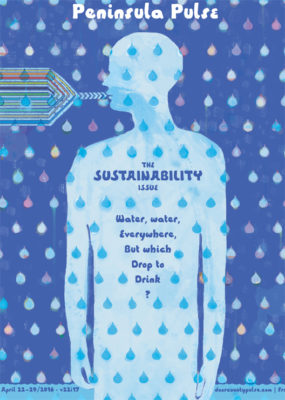Flashback: 1993 Contamination Spurred Changes in Ephraim
- Share
- Tweet
- Pin
- Share
The Village of Ephraim experienced just how disruptive water problems can be 23 years ago.
In 1993 coliform bacteria was found in 34 village wells after routine testing by the Wisconsin Department of Natural Resources. Though nobody was reported sick from drinking or using the water, the incident was enough to put a scare into the community at the height of the tourist season after the DNR issued a boil order for the entire village.
“There were some business owners nudging the DNR, asking if they really had to issue the order,” recalled John Lowry, owner of the Blue Dolphin House and then village board member. “It’s not something you want in the papers if you’re a tourism-dependent community.”
Unfortunately it made headlines in the Milwaukee Journal Sentinel and other state papers. One tourist visiting Ephraim during Labor Day weekend was quoted as saying “It’s like going to Mexico, you don’t drink the water.” It was a comparison no Door County business owner or resident wanted to hear.
It was particularly disconcerting to village officials because Ephraim had installed a new wastewater treatment facility in 1987 at a cost of $5.3 million in an effort to solve a history of sporadic water problems in the village. Lowry led that effort.
“There was a time in the 1970s that you’d swim in Ephraim at certain times and get a rash and flu-like symptoms,” Lowry recalled. “People called it Ephraimitis.”
There were a lot of failing septic systems in the village, Lowry said, and with the entire village at the base of the bluff it is particularly susceptible to stormwater runoff problems.
“When we put in the wastewater treatment plant it was the biggest expense Ephraim had ever taken on up to that point,” Lowry recalled. “We had well problems, beach contamination problems.”
The wastewater treatment plant didn’t cover the entire village, however, and many businesses on the north end remained on private wells.
Tom Schuder owned the Door Way Motel in Ephraim during the incident, but didn’t recall it having a big impact on business.
“We didn’t have any cancelations,” he recalled, “but I do remember having to provide bottled water to guests for a time.”
Wells periodically tested positive for bacteria several times in the next year, stumping officials. Eventually, part of the problem was traced to earwigs, small bugs which had entered through well caps and contaminated water.
The DNR recommended that the village install a municipal water system, but estimates to do so came in as high as $13,000,000, extremely prohibitive for a community that claimed just 261 residents at the time.
Eventually the DNR approved a plan to install UV Point of Entry systems on private wells to solve the problem, though they aren’t required. After a holding tank overflowed on the north end of Ephraim in the early 2000s, the village extended the wastewater treatment to Town Line Road.
Fortunately for residents and businesses, Ephraim hasn’t dealt with a scare similar to the earwig incident since 1994.





